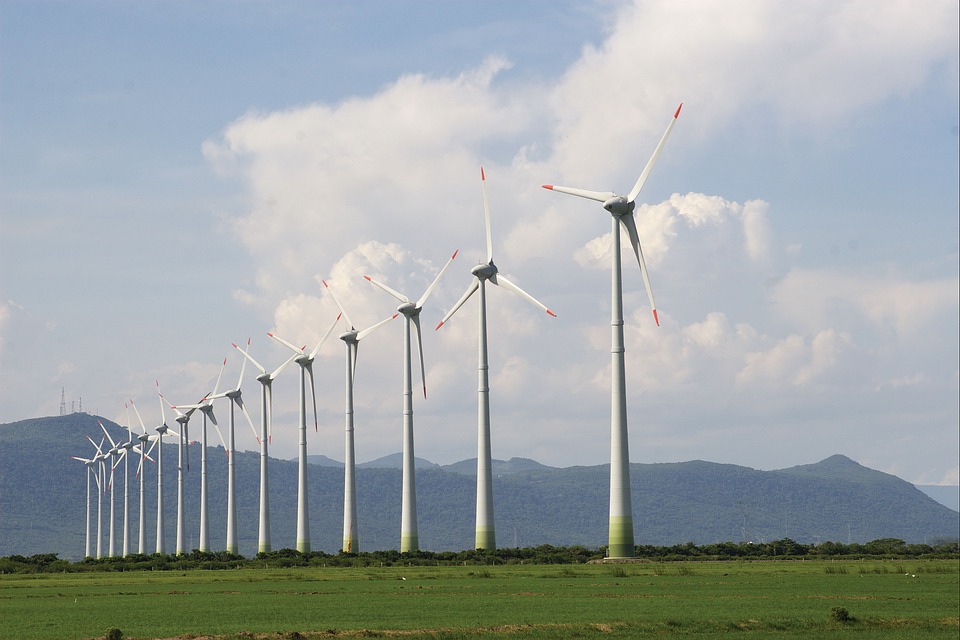ID alumna Shreya Gulati and Anand Babu look at how increasing investment in renewable energy sources from a number of countries is impacting the global energy landscape.
The alarming levels of air pollution triggered by the relentless consumption of fossil fuels is one of many reasons to treat the goal of decarbonisation as an urgent imperative. The Sustainable Development Goals (SDGs) envisioned by the United Nations in 2015 have set several ambitious goals such as universal access to modern energy services, improvement in energy efficiency, and most importantly, a significant rise in the share of renewable energy by 2030. At this point in time, more than six years after the UN Climate Change Conference in Paris (COP 21), the pace of zero-carbon solutions has gathered momentum across various sectors on a global scale.
Research and development activities to harness clean energy sources like solar power and wind energy have achieved remarkable pace in the renewable energy landscape. Estimates of The International Renewable Energy Agency (IRENA) suggest that an optimal combination of renewable energy and improved energy efficiency is the key to achieving almost 90% of the global carbon emission levels set by the Paris Accord in 2015. However, the transition from traditional fossil fuels to renewable energy sources will have a range of geopolitical and economic ramifications.
China leads the way
China is currently the world’s largest energy consumer, emitting nearly one-quarter of global greenhouse gases and outweighing the combined coal consumption of the rest of the world. The massive escalation in demand for energy and increased dependence on fossil fuels have evoked strict policy interventions from the Xi Jinping administration. As a result, a comprehensive plan placing renewable energy as one of the top priorities of the country was introduced in December 2016. Consequently, China became the world’s largest producer of wind energy, surpassing the United States. Today it generates at least one-third of global solar power. Further, the first national policy document on energy storage released in 2017 envisions the development of more reliable and cost-effective batteries, – a crucial factor in increasing the number of electric vehicles on the road.
Renewable energy sector: a multi-player game
In 2019, the world financed USD 282 billion renewable energy capacity, with wind energy leading with USD 138 billion and solar power with USD 131 billion. Advanced and emerging economies are eager to get a foothold in this niche sector. For instance, under the ‘American Jobs Plan,’ the United States aims for a substantial increase in investments in renewable energy solutions. In the case of Europe, Germany leads the path with 31,000 renewable energy patents and the ongoing energy transition initiative called, ‘Energiewende’. According to the latest reports, the country has decided to shut down three existing nuclear power plants. Another industrialised nation, Japan, revised its target of cutting greenhouse gas emissions to 46% from the earlier goal of 26% in April 2021. Further, in October 2021, Japan revised its share of renewables in the total energy mix to 38% from the previously set target of 24%. The UK government has recently opened its biggest flagship renewable energy support scheme worth £285 million with a target of achieving 12 GW electricity capacity. The proposed enhancement in UK’s wind energy capacity alone is expected to power approximately eight million homes.
When it comes to emerging economies, India deserves special attention. Tremendous population pressure and increasing energy demand, has prompted India to seek alternative energy sources. With an installed renewable energy capacity of 150 GW, the country has set a target of generating 175 GW from renewables alone by the end of 2022. Currently, the Narendra Modi government is focusing on developing electric vehicles, solar power generation, and green hydrogen. Brazil,– a maverick in the renewable energy sector, consists of millions of motor cars, powered by sugarcane alcohol, a type of biofuel. Post-2010, investments in wind and solar energy have gained significant momentum in Brazil. The combined installed capacity of Brazilian wind energy plants stands at around 12 GW, and an additional 6 GW is being built, which adds up to 10% of the overall national installed energy capacity. Moreover, as per the long-term projections, Brazil’s solar energy can grow up to 32% of its total capacity by 2040.
The geopolitics of energy transition
The current structural transformation in the global energy landscape will have geopolitical and economic ramifications for those countries reliant on fossil fuel resources. The influence once enjoyed by Organization of the Petroleum Exporting Countries (OPEC) and OPEC+ is likely to witness a sharp deterioration in the long-term as the switch from fossil to non-fossil fuels continues to gather pace. IRENA’s report on the Geopolitics of the Energy Transformation (2019) classifies four groups of fossil fuel exporters based on their exposure and resilience. The first group consists of highly exposed and low resilience countries such as Libya, Angola, the Republic of Congo, Timor-Leste, and South Sudan. The second group includes Saudi Arabia, Qatar, Kuwait, the United Arab Emirates (UAE), and Brunei Darussalam, countries that are highly exposed, but resilient. The third group is moderately exposed and moderately resilient countries, including Russia, Iran, Algeria, and Azerbaijan. The last group consists of low-exposure countries like Malaysia, Bahrain, Colombia, and Norway.
Many oil-exporting countries provide highly subsidised yet high-quality public provisions such as education, health care, water supply and electricity. However, a transition to renewable resources may lead to a considerable fall in the oil revenue for sustained periods which would prompt these countries to prioritise public expenditure and cut down several subsidy components. Such unpopular and drastic measures can significantly challenge the authority of the state and instigate widespread protests and violence. Further, political unrest emanating from a country or a group of countries can trigger a domino effect and threaten the internal security of other countries. As far as migration is concerned, such turbulences can result in at least two broad sets of issues.
The first concern is that millions of migrants who work in crude oil or coal-producing countries will become jobless, which would in turn reduce the flow of remittances to their home countries, causing a global economic downturn. Secondly, mass exodus of workers can inflict multidimensional issues in many South-Asian and African countries such as India, Bangladesh, Pakistan, Sri-Lanka, Nepal, Egypt, Ethiopia, Kenya and Uganda. For instance, with four million migrants working in Gulf countries, Kerala, the small southern Indian state had received approximately 14 billion U.S Dollar in 2020 alone (13% of Net State Domestic Product). However, the covid-19 induced lockdowns and the economic somnolence owing to unprecedented dip in crude oil prices have resulted in a massive reverse migration of around 1.2 million migrant workers from the Middle East countries. Such a scenario would certainly cause heavy ripple effects on the socio-economic fabric of the state via the reverse multiplier effect.
Also, the eruption of violence in fossil fuel-rich countries will force its citizens to seek asylum in neighbouring countries, causing social, economic and cultural tensions in host countries. If these possibilities seem far-fetched, it it’s worth recalling that one of the significant factors that led to the Soviet Union’s disintegration in 1990 was the consistent dip in international crude oil prices witnessed during the 1980s. And the most crucial geopolitical outcome of the USSR’s fall was the finale of the ‘cold war’ marking an end to the erstwhile bi-polar world order. Renewable energy is capable of what fossil fuels did to the 20th-century world order. Hence, the implication of the ongoing energy transition is not just about arresting the pace of global warming but also about redefining the global power equations.
The views expressed in this post are those of the author and in no way reflect those of the International Development LSE blog or the London School of Economics and Political Science.
Photo credit: Osório Osório Wind Farm Clean Energy Brazil






Great discussion